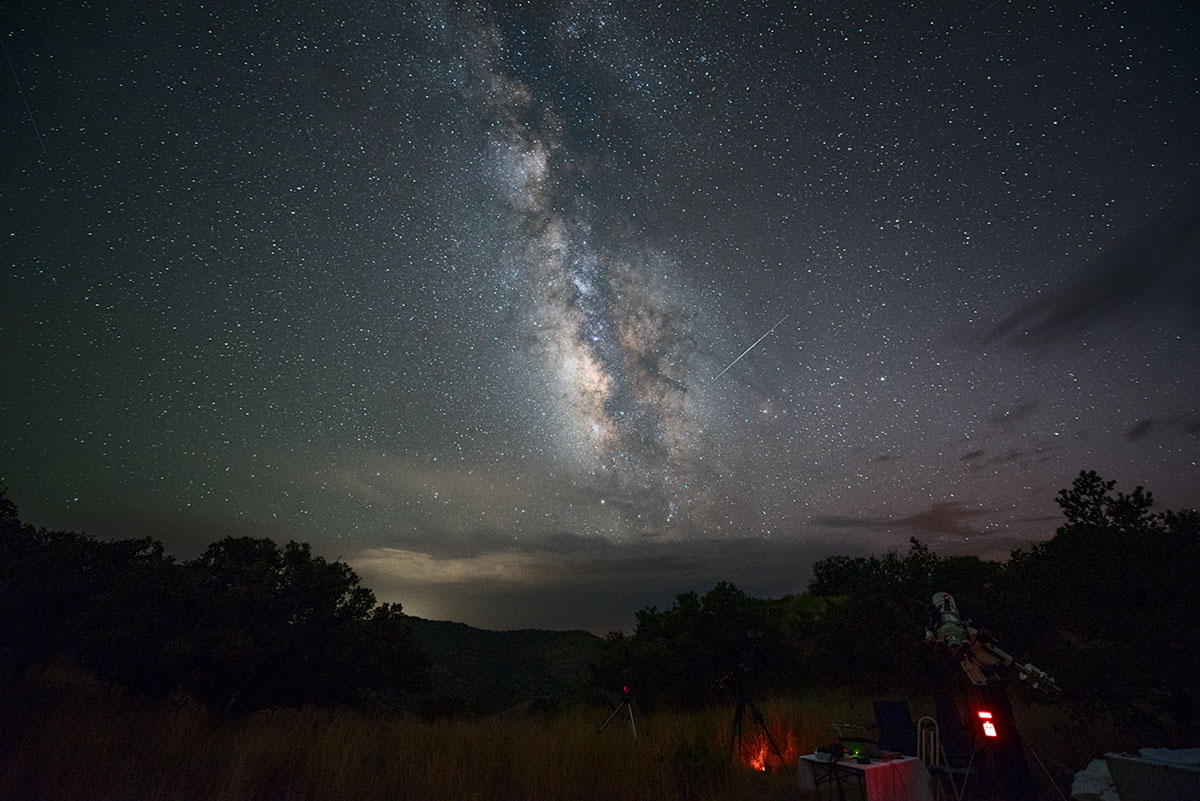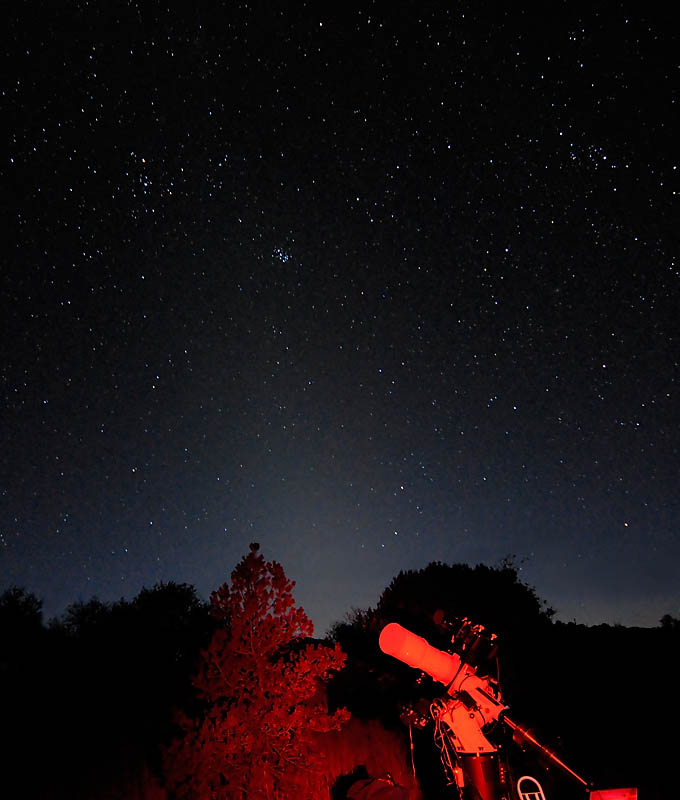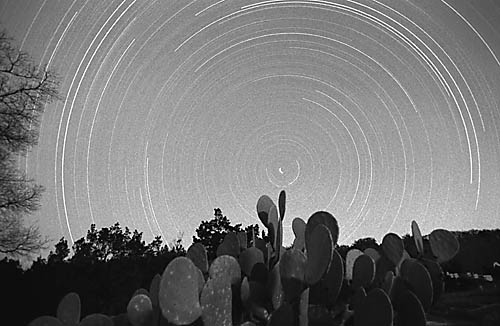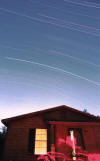
Summer Milky Way & Satellite Flash

This is a satellite flash in what I think is the most interesting part of the sky. Below the flash is the Antares area. Just to the left is the Pipe Nebula and/or Galactic Dark Horse, and on further to the left is a nice bright swath of the Milky Way. This is from my 2015 Davis Mountains trip and is one of more than 1000 individual frames that went into this time-lapse movie of the night. See more pictures on my Satellite Page. And, did you notice the other satellite in the frame? (Upper left.)
Equipment & Discussion: Nikon D750, 14mm on the 14-28mm lens, f2.8, ISO 1600, 30 second exposure. Note how much detail and color is shown on the ground in this image shot just before the end of astronomical twilight! The milky way area lacks the H-alpha red color than this unmodified camera filters out as compared with the D810A (see image below!).
This image presents an interesting contrast with the D750 image at the top of the page. Both are 30 second exposures at f2.8 with the Nikon 14-24mm lens. (This one is at 16mm vs 14mm on top.) Aside from some differences in the color balance, the main feature of note with the D810 is the visibility of the red H-alpha nebulae present here. That's because the Nikon D810A is designed with a specialized I/R filter that allows these light frequencies to pass through to the camera sensor. Standard camera IR filters block Hydrogen Alpha emissions. Check my Milky Way gallery to see more detailed images of this awesome area of the sky. Also, it's hard to escape satellites shortly after sunset, do you see the satellite in this frame?

Planet Alignment Pictures here (also fixed tripod)

Zodiacal light, visible from very dark skies after sunset, is actually sunlight reflecting off dust! Above you can see the zodiacal light above the tree & scope, pointing up towards the Pleiades (M45) (see below). I used my red flashlight to paint the tree & scope for effect. Nikon D200 camera, 30 second exposure with super-wide lens = Tokina 12-24 F4 G lens at 12mm, from Spring 2009 trip to the Davis Mountains.

Star Trails Over Cactus... Wimberley, TX
The image above is from my February 2007 trip to Wimberley.
 Blue Mountain 2007 Star Trails & Daylight |  Star Trails over the B&B |  West Texas Davis Mountains - Star Trail Pictures |  Cactus Trails |
|  Blue Mountain 2007 Star Trails & Daylight |  Older and many more Star Trails! |  See this one toward the bottom of this page |
 Wide Angle Star Trails and NHAC Observing Field, 9/28/02 | New 2006: Star Trails and Orionid Meteors | 11/2006: HAS Site Trails (another Meteor and the 2 brightest stars in the night sky) | Constellation and Fixed Tripod Images - Orion Area - Pictures |
The links above and below will take you to other cool star trails pictures.
Copyright © Dick Locke. All Rights Reserved.
Contact and Image Use Information
Here's a good reference from photo.net